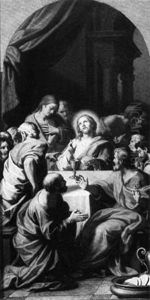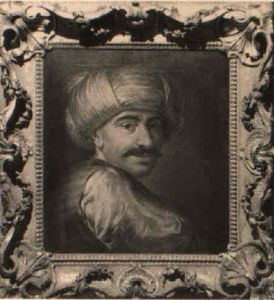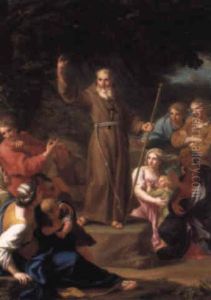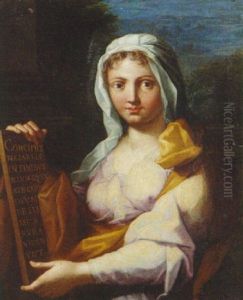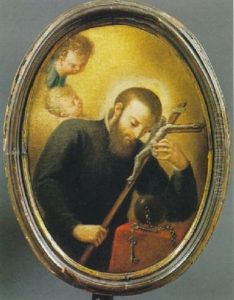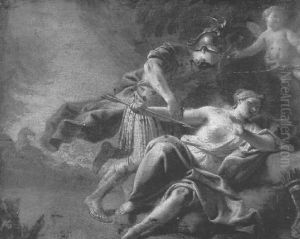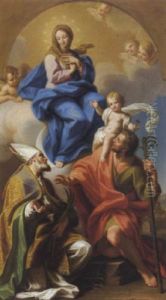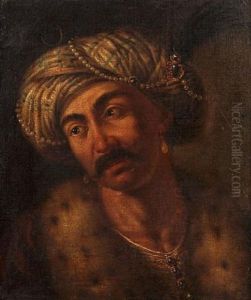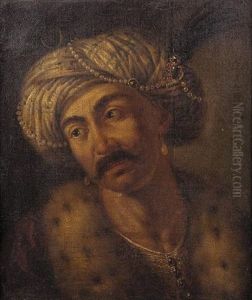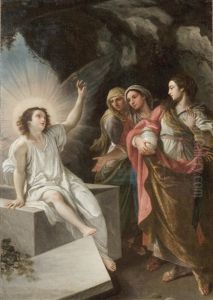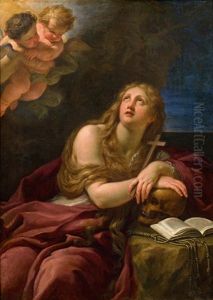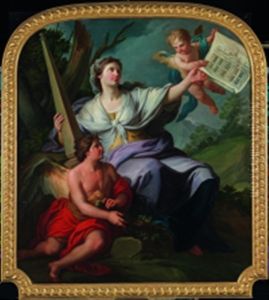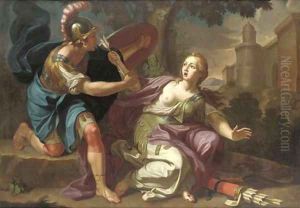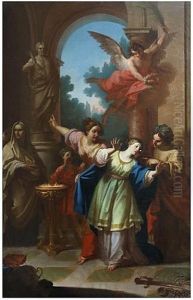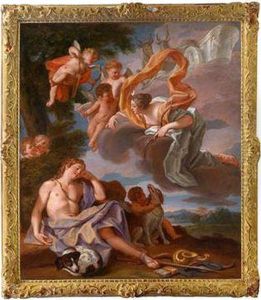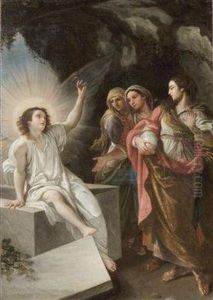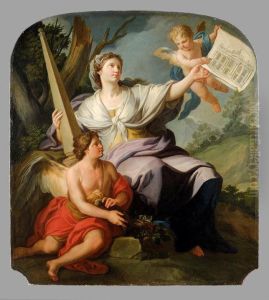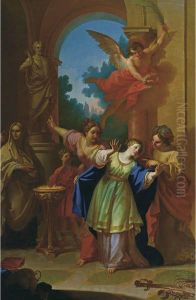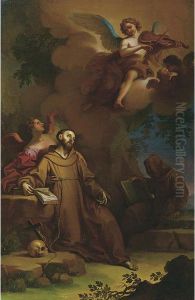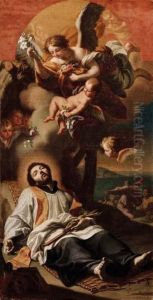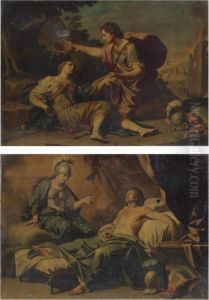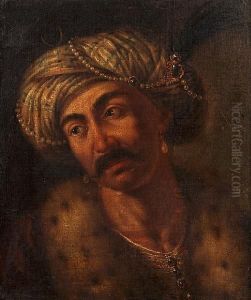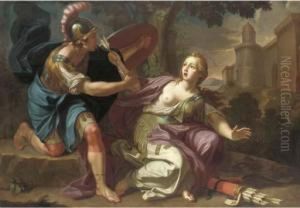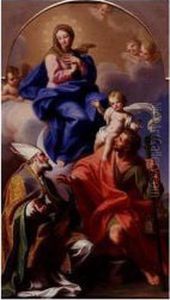Gaetano Lapis Paintings
Gaetano Lapis was an Italian painter born in 1704 in Cagli, a town within the Marche region of Italy. He is recognized for his contributions to the late Baroque and early Neoclassicism movements, although his style was deeply rooted in the Baroque tradition. Lapis was a prolific artist, known for his religious and mythological paintings, as well as his ability to infuse his works with a dynamic sense of movement and dramatic lighting effects.
His early training is not well documented, but it is believed that he started his artistic journey in his hometown before moving to Rome, where he was influenced by the works of prominent artists of the time such as Sebastiano Conca and Marco Benefial. In Rome, Lapis honed his skills and began to develop his distinctive style.
Throughout his career, Gaetano Lapis received numerous commissions from churches and noble families, not only in his native Marche but also in other regions of Italy. His works include altarpieces, frescoes, and canvas paintings that often depicted scenes from the Bible, classical mythology, or the lives of saints. Some of his notable works include frescoes in the Cathedral of Cagli and the Church of San Domenico in Urbino.
Despite his significant contributions to Italian art, Gaetano Lapis is not as well-known today as some of his contemporaries. However, his works remain appreciated for their emotional intensity and technical skill. Lapis' paintings are characterized by their vivid colors, dramatic use of light and shadow, and the dynamic poses of their figures, which showcase his mastery of Baroque aesthetics.
Gaetano Lapis passed away in 1776, leaving behind a legacy that has been cherished by art historians and collectors. His works continue to be studied and admired for their artistic value and for the insight they provide into the transitional period between the Baroque and Neoclassical styles in Italian art.
